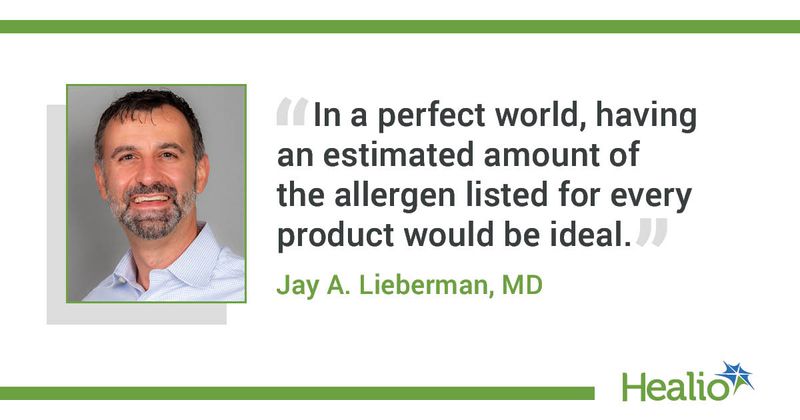Q&A: FDA warns Bimbo Bakeries USA on use of inaccurate food allergy warning labels
Key takeaways:
- Since the FASTER Act has gone into effect, more manufacturers are adding sesame to their ingredient lists.
- Bimbo Bakeries USA has until July 8 to remedy its food allergen labeling violation.
The FDA issued a warning against Bimbo Bakeries USA, which includes brands such as Sara Lee and Brownberry among others, on June 25 over incorrect allergy warning labels.
In a warning letter, the FDA stated that four Sara Lee products are mislabeled because “they include sesame seeds in the ingredient and ‘Contains’ statements; however, sesame seed is not an ingredient in the product formulations.”

Also, the letter said, the label for a Brownberry brand product includes walnuts, almonds and hazelnuts in its ingredients and “Contains” statements even though these nuts are not ingredients in the product’s formulation.
Bimbo Bakeries has a deadline of July 8 to report to the FDA with specific steps on how it will address the violations.
Sesame was added to the list of major allergens that must be listed on food packaging following the FASTER Act, which went into effect in the beginning of 2023. In a statement about the act, the FDA wrote that “packaged food products that contain sesame must declare the ingredient as an allergen on their labels.”
Yet some food manufacturers are now including sesame and other allergens on its labeling even when these foods do not contain these items, or intentionally adding allergens to products that otherwise do not have them, to protect themselves against liability.
Healio spoke with Jay A. Lieberman, MD, chair of the American College of Allergy, Asthma & Immunology Food Allergy Committee and member of Healio’s Allergy/Asthma Peer Perspective Board, about the consequences of food mislabeling and how consumers can stay safe.
Healio: The FASTER Act requires food manufacturers to inform consumers about potential allergy content on their labels. Do you think this law has been helpful?
Lieberman: The law is absolutely helpful. The idea that ingredients/labels should be very clear and precise is very important for anyone with a food allergy. Requiring manufacturers to list the ingredients in simple terms if possible and then list major allergens in bold letters if they contain that allergen is very helpful. Food allergy patients need confidence in package labeling. It unfortunately can get confusing when extra labeling is done, such as adding precautionary allergen labeling (which is not regulated), as its meaning is not as clear cut.
Healio: What effect can inaccurate labeling — saying that foods may include allergens when they really do not — have on consumers with allergies?
Lieberman: This can just make it more confusing and difficult for patients and families. The FDA letter notes that if manufacturers list an allergen that is not actually an ingredient, it can undermine the trust of the process, and it can also cause confusion and can limit product choices for patients and families.
While an error of commission is greater than an error of omission (meaning not listing an allergen that is actually in the product is a much worse error than listing an allergen that is not in the product), this type of error is still frustrating.
Healio: What steps can patients with allergies take to ensure they are buying and eating foods that are safe?
Lieberman: I always tell my patients to read the label. If the allergen is listed as an ingredient, or if the package says it “CONTAINS” the allergen in bold letters, they need to avoid the package.
I try to allow for an individualized approach to whether the family/patient eats foods with precautionary allergen labeling (eg, “may contain” or “made in a facility with”). In the end, I would rather them avoid it if they are unsure.
Healio: How can allergy specialists help their patients navigate these challenges?
Lieberman: Educate them on what the labels mean and how to read the labels. Again, the nuance comes in educating and counseling when the allergen is listed with the precautionary (voluntary) allergen labeling wording.
Healio: On a policy level, what can be done to better ensure allergen safety?
Lieberman: In a perfect world, having an estimated amount of the allergen listed for every product would be ideal. However, this is unlikely to happen given the difficulty in this.
Healio: Do you have any other comments about these practices?
Lieberman: I would really like to see tree nut labeling be more specific and accurate. The current labeling just requires that if the product contains any tree nut, it has to be labeled as CONTAINS TREE NUTS. However, most tree nuts are not cross-reactive, and most patients are only allergic to a few tree nuts. Lumping them all together in this instance makes for a lot of confusion. In fact, most “tree nuts” in this sense are not even nuts ... which is nuts!
References:
- Warning letter: Bimbo Bakeries USA, Inc. https://www.fda.gov/inspections-compliance-enforcement-and-criminal-investigations/warning-letters/bimbo-bakeries-usa-inc-672140-06172024. Published June 17, 2024. Accessed June 28, 2024.
- The FASTER Act: Sesame is the ninth major food allergen. https://www.fda.gov/food/food-allergies/faster-act-sesame-ninth-major-food-allergen. Updated April 12, 2024. Accessed June 28, 2024.
For more information:
Jay A. Lieberman, MD, can be reached at jlieber1@uthsc.edu.
